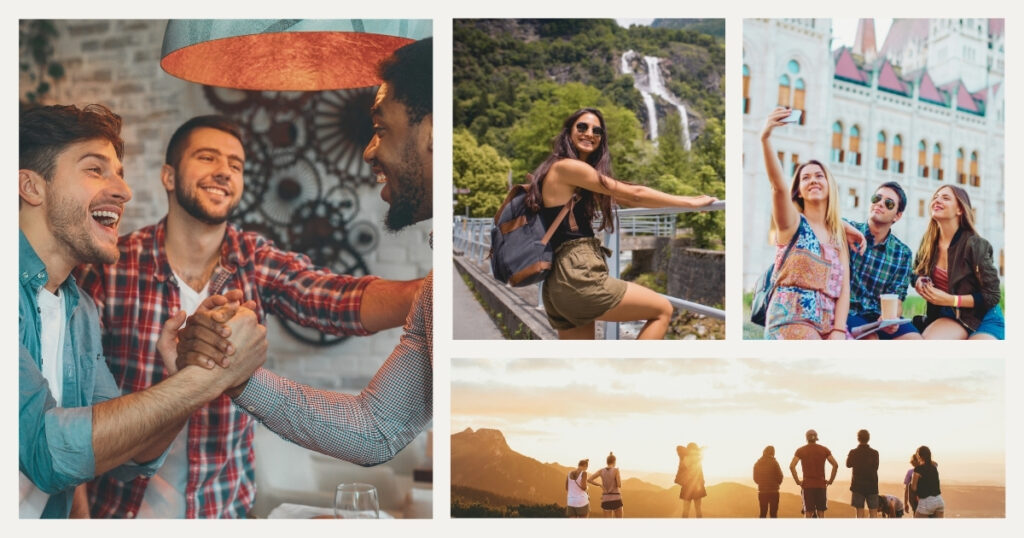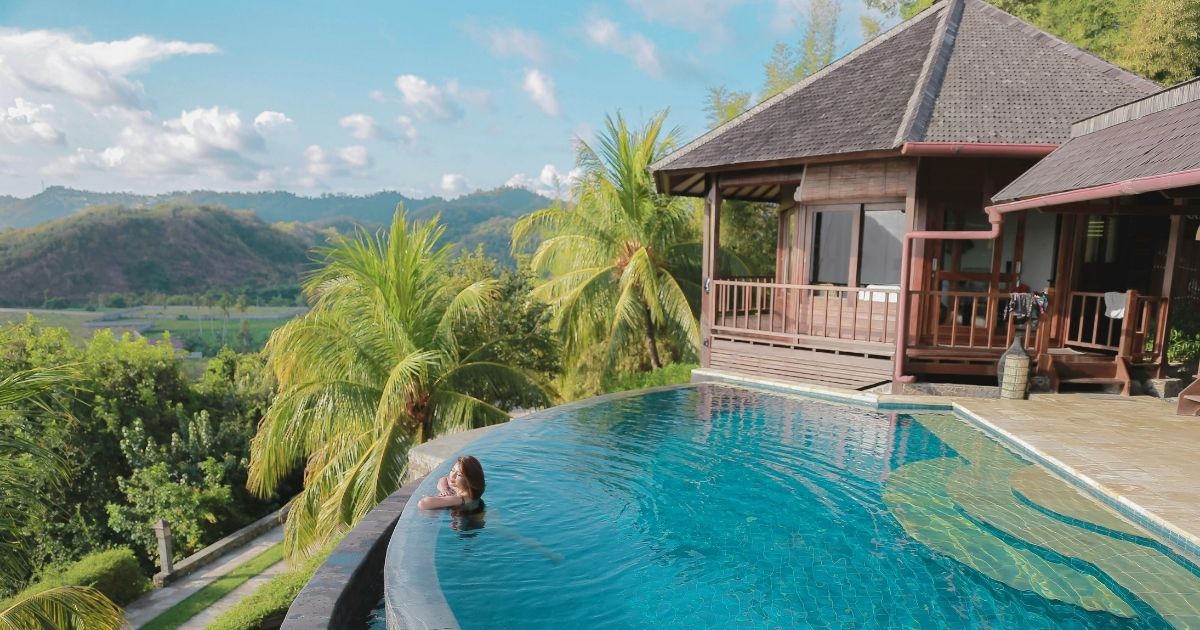Embarking on a solo journey as a digital nomad offers unparalleled freedom and flexibility, but it can also bring moments of isolation that contrast sharply with the vibrant experiences you seek. Learning how to meet people when traveling alone transforms solitary adventures into rich social experiences while maintaining the independence that makes nomadic life appealing.
Understanding effective approaches to forming connections across cultures and contexts is particularly crucial for digital nomads, who balance professional responsibilities with exploration. Unlike traditional tourists or backpackers, nomads seek more sustainable relationships that accommodate work schedules and potentially longer stays in each location.
In this comprehensive guide, we look at practical strategies for how to meet people when traveling alone, helping you build meaningful connections that enhance both your personal journey and professional experience across the globe.
Why knowing how to meet people when traveling alone matters

The ability to form connections while solo traveling dramatically transforms the quality of your nomadic lifestyle, affecting everything from your mental wellbeing to professional opportunities.
The balance between solitude and connection
Solo travel provides invaluable opportunities for self-reflection, independence, and personal growth. However, extended isolation can negatively impact your mental health and work productivity, particularly for digital nomads whose remote work already limits traditional office social interactions. Understanding how to meet people when traveling alone allows you to enjoy the benefits of solitude while preventing the loneliness that often accompanies it.
The key lies in finding the right balance—creating space for focused work and personal reflection while actively cultivating meaningful human connections. This balance varies for each traveler; some thrive with daily social interaction, while others prefer occasional deeper connections. Recognizing your personal social rhythms helps you develop sustainable strategies for creating community wherever your nomadic journey leads.
🌟 Pro tip: create a weekly social calendar that complements your work schedule. Designate specific times for focused work and others for social activities. This structure helps prevent both isolation and the opposite extreme—social burnout that can disrupt your professional commitments.
Beyond surface-level interactions
Many resources on how to meet people when traveling alone focus on quantity over quality, emphasizing fleeting encounters rather than meaningful connections. For digital nomads, who often stay in locations longer than traditional travelers, developing deeper relationships becomes both possible and necessary for a sustainable lifestyle.
Authentic connections provide more than companionship—they offer local insights that enhance your experience, potential professional networking, and emotional support systems that make unfamiliar places feel more like home. These relationships often evolve naturally from shared experiences, mutual interests, or regular interaction in coworking spaces, neighborhood cafés, or community events.
💡 Did you know? Research published in the Journal of Social and Personal Relationships suggests that it takes approximately 50 hours of interaction to move from acquaintance to casual friend, and about 200 hours to develop a close friendship. As a digital nomad staying in locations longer than typical travelers, you have the unique advantage of time to develop these deeper connections.
Digital tools for meeting people while traveling solo

Technology offers powerful platforms for finding like-minded individuals in unfamiliar locations, particularly valuable for digital nomads already comfortable with online communication.
Apps and platforms designed for connection
Specialized apps designed specifically for travelers have revolutionized how to meet people when traveling alone. Beyond dating apps (which some travelers use primarily for social connections), platforms like Meetup, Couchsurfing Hangouts, and Bumble BFF connect you with locals and fellow travelers for activities, events, or simple conversation with no romantic expectations.
Digital nomad-specific communities like Nomad List, WiFi Tribe, and Selina offer both virtual and in-person opportunities to connect with others who understand the unique lifestyle challenges you face. These platforms frequently host events, coworking sessions, and skill-sharing workshops that facilitate natural relationship building through shared professional interests and lifestyle choices.
Leveraging social media for local connections
Strategic use of social media platforms transforms them from passive consumption tools to active connection catalysts. Facebook Groups dedicated to specific locations, digital nomad communities, or activity interests (like “Photographers in Lisbon” or “Bali Digital Nomads”) provide immediate access to established communities with regular meetups and insider knowledge.
Instagram location tags and hashtags allow you to discover locals and travelers in your area with similar interests. Engaging authentically with their content before reaching out directly often leads to more successful connections. Similarly, Twitter spaces and LinkedIn events related to your professional field offer opportunities to meet people digitally first, then transition to in-person connections when you discover you’re in the same location.
🌟 Pro tip: when using digital platforms to meet people while traveling solo, prioritize your safety. Always meet in public places, share your location with someone you trust, and trust your instincts if something feels off. Most connections will be positive, but maintaining awareness ensures they remain so.
Physical spaces and activities for building connections

While digital tools facilitate initial meetings, physical spaces and shared activities create the environment for deeper relationships to develop naturally.
Coworking spaces as social hubs
For digital nomads, coworking spaces serve as the perfect intersection of professional necessity and social opportunity. Beyond providing reliable internet and comfortable workstations, these spaces host community events, skill-sharing workshops, and happy hours specifically designed to foster connections among members.
Regular attendance at the same coworking space transforms you from visitor to community member, making it easier to develop relationships through consistent interaction. Many spaces offer community slack channels, bulletin boards, or lunch groups that facilitate connections based on shared interests beyond work. The structured environment of a coworking space makes initiating conversation feel more natural than in purely social settings.
Accommodation choices that facilitate meeting others
Where you stay significantly impacts your opportunities to meet people while traveling alone. Coliving spaces designed for digital nomads provide private rooms alongside community kitchens, work areas, and event spaces that balance independence with built-in social opportunities. Properties like Selina, Outsite, and local coliving communities create programming specifically for connection while respecting work schedules.
Even without choosing formal coliving, accommodation choices affect your social opportunities. Smaller boutique hostels with private rooms offer both privacy and community spaces. Vacation rentals in residential neighborhoods rather than tourist districts increase chances for authentic local interactions. Even traditional hotels can facilitate connections through communal breakfast areas, hotel bars, or organized activities.
Participatory activities and classes
Structured activities provide natural conversation starters and shared experiences that accelerate relationship building. Cooking classes, language exchanges, dance lessons, or guided hiking trips create environments where conversation flows naturally around the shared experience, making it easier to learn how to meet people when traveling alone even for more introverted nomads.
Local tours focused on specific interests—street art, food, architecture, or history—attract like-minded participants and create natural opportunities for connection. Smaller group experiences typically facilitate better interaction than large tour groups. Many cities offer free walking tours that provide both cultural context and the chance to meet other solo travelers interested in exploring the destination.
Key approaches for joining activities with social potential:
- Sign up for multi-day courses rather than one-time events when possible
- Choose smaller group experiences over large tours
- Look for activities marketed to locals as well as tourists
- Select interactive experiences over passive observation
- Arrive early and stay late to maximize informal conversation time
- Position yourself near other solo participants
- Ask open-ended questions about others’ experiences
- Follow up on connections with specific suggestions for future meetups
🌟 Pro tip: consistent participation in a recurring activity—like a weekly language exchange, yoga class, or running group—creates the repeated exposure that transforms acquaintances into friends. Even if you’re only in a location for a month, attending the same weekly event four times builds stronger connections than trying four different activities.
Connectivity strategies for on-the-go socializing

Maintaining reliable internet access is essential for digital nomads who want to leverage online communities and coordinate meetups while traveling.
Ensuring seamless communication
When working to meet people while traveling solo, staying connected allows you to respond promptly to meetup opportunities, check event details, and coordinate spontaneous gatherings. Reliable connectivity also supports video calls with new connections when in-person meetings aren’t immediately possible.
A travel-focused eSIM solution from Holafly provides consistent connectivity throughout your journey without the hassle of purchasing local SIM cards in each destination. Their data plans ensure you never miss social opportunities due to connectivity issues, whether you’re coordinating a hiking excursion in Patagonia or a coworking meetup in Bangkok.
Creating your own social opportunities
Sometimes the most effective strategy for how to meet people when traveling alone is to create the gathering yourself. Hosting a small event—anything from a picnic in a local park to a skill-sharing workshop at your coworking space—positions you as a connector and naturally draws others seeking community.
Digital nomad-focused events like “Nomad Coffee Meetups” or “Remote Workers Lunch” attract participants facing similar challenges and create immediate common ground. Even simple initiatives like posting in a local digital nomad group offering to share a taxi to a popular destination or creating a dinner reservation for six and inviting others to join can transform your social experience.
Final thoughts on building connections while traveling solo
Learning how to meet people when traveling alone represents one of the most valuable skills in a digital nomad’s toolkit. The connections you form transform unfamiliar destinations into communities, provide emotional support during challenging transitions, and often lead to professional opportunities that wouldn’t arise in isolation.
While initial outreach might feel uncomfortable, particularly for more introverted travelers, the potential rewards far outweigh momentary discomfort. Most travelers and locals respond positively to authentic, respectful attempts at connection, recognizing the universal human desire for meaningful interaction.
With intentional practice, meeting people becomes less a challenge and more an enriching dimension of your nomadic lifestyle—one that complements your professional journey and transforms your experience from simply working in different locations to truly living in them.
Ready to transform your solo journey with meaningful connections?
Nomada offers additional resources for digital nomads navigating the challenges of location-independent lifestyles, from community building to maintaining productivity while exploring the world.
Your connected nomadic journey begins with Nomada 👉
Frequently asked questions about meeting people while traveling solo
Both environments facilitate connections, but in different ways. Hostels offer high-volume, often younger social interactions with primarily short-term travelers. Coliving spaces attract longer-term digital nomads and professionals, potentially leading to more sustainable relationships that better understand your work-life balance needs. Choose based on your preference for interaction intensity and desired connection depth.
Introverts often thrive with structured activities that have built-in conversation topics like cooking classes, guided tours, or workshops. Coworking spaces provide interaction opportunities with natural breaks. Schedule dedicated alone time between social activities to recharge, and choose accommodation with private space. Quality connections with a few people often provide more satisfaction than numerous surface-level interactions.
Always meet initially in public places, trust your instincts if something feels wrong, and keep someone informed about your plans. Avoid sharing your specific accommodation address until you’ve established trust. Be careful with alcohol consumption, especially in unfamiliar environments. Research cultural norms around friendship and gender dynamics in your destination to avoid misinterpretations.
Exchange contact information through platforms you both actively use (WhatsApp, Instagram, etc.). Follow up promptly with a specific message referencing your interaction. For potentially valuable connections, suggest a virtual coffee if you’re both moving on. Create a system for occasional check-ins with your most meaningful connections, perhaps sharing updates when you visit somewhere they recommended or celebrating their achievements.




